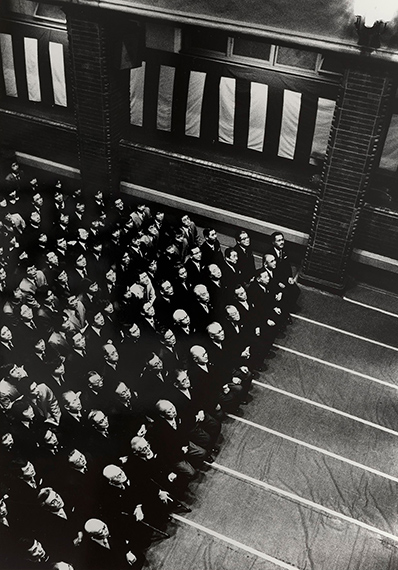
Suidobashi, 1981
Signed and dated by the artist in pencil verso
Vintage silver gelatin print
25.4 x 30.5 cm
© Ishiuchi Miyako, courtesy Michael Hoppen Gallery, London
Miyako Ishiuchi »
Suidobashi
Independent 20th Century
Fair: 5 Sep – 7 Sep 2025
Thu 4 Sep
Casa Cipriani at the Battery Maritime Building
10 South St Slip 7
NY 10004 New York
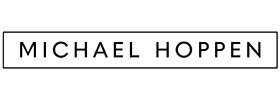
Michael Hoppen Gallery
10 Portland Road
W11 4LA London
+44 (0)20-73523649
gallery@michaelhoppengallery.com
www.michaelhoppengallery.com
Mon-Fri 10-18
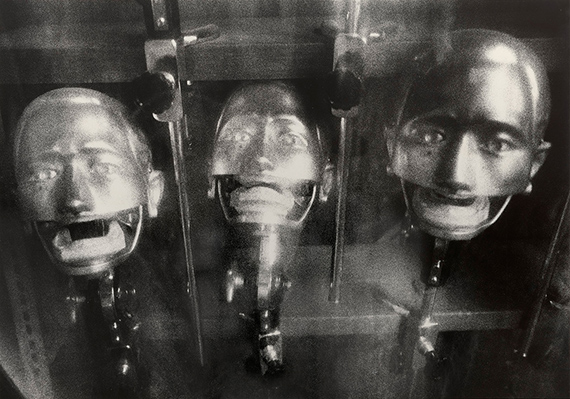
Suidobashi, 1981
Artist's signature and date in pencil verso
Vintage silver gelatin print
25.4 x 30.5 cm
© Ishiuchi Miyako, courtesy Michael Hoppen Gallery, London
Michael Hoppen is delighted to announce the gallery’s inaugural participation at Independent 20th Century, New York, with a solo presentation of Ishiuchi Miyako (b. Gunma, Japan, 1947), a pivotal figure in international contemporary photography. Our stand will spotlight Suidobashi, a rarely seen early body of work that marks the emergence of Ishiuchi’s radical and deeply personal photographic language.
Ishiuchi’s practice is profoundly rooted in personal and collective memory, noted for grainy, raw, and emotionally charged black and white images. Early work by the artist prefigured contemporary interest in subjective documentary and autobiographical narratives, a thread that runs through much of today’s photographic and lens-based art.
Having been awarded the Ihei Kimura award in 1979, Ishiuchi was chosen to create a record of the Tokyo Dental College in the Suidobashi district of Tokyo. The series was published in 1981 and acclaimed for its homage to the history and spirit of the institution. Our presentation presents vintage silver gelatin prints, each made by Ishiuchi in the late 80s. As a group, they have rarely been exhibited and are presented here for the first time outside of Japan.
For Ishiuchi, this physical process of making a silver gelatin print is bound up with the inscription of subjectivity into her photography. She developed the coarse-grained, monochrome style which would become her signature by experimenting in the darkroom at home during the 1980s. The concentrated, grainy effect which she achieved by ‘over-developing’ her negatives allowed Ishiuchi to expressively render dramatic, textural surfaces and overcast landscapes or interior scenes. The atomised gradients she achieved have been compared to the are-bure-boke (rough, blurred, out of focus) style popularised by photographers including Moriyama Daidō, associated with Provoke Magazine (1968-1969).
However, whereas Provoke contributors developed this appearance as a function of their rejection of expression through aesthetically guided choice, Ishiuchi’s controlled approach to manipulating composition, contrast and grain is part of her commitment to enshrine her work with subjectivity. She drew upon her academic background in textiles to describe the printing process:
‘I print a photograph as though I’m dyeing or weaving it. The experience is thrilling, to see the images emerging through the developer, tracking the grains as though I could count each one, wound up becoming happy memories.’
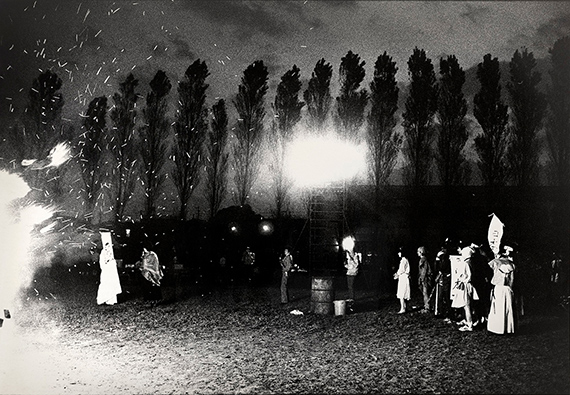
Suidobashi, 1981
Artist signature and date in pencil verso
Vintage silver gelatin print
25.4 x 30.5 cm
© Ishiuchi Miyako, courtesy Michael Hoppen Gallery, London
For Ishiuchi’s retrospective at the Yokohama Museum of Art in 2017/2018, the curators decided to reflect on the significance of this printed texture to Ishiuchi by naming the exhibition “Grain and Image.”
Alongside Suidobashi, the gallery’s presentation will be supported by other vintage silver gelatin prints from Yokosuka Story (1976–77) and Apartment (1977–78). These pivotal chapters in Ishiuchi’s life carved out a new terrain of expression that merged the psychological, political, and autobiographical into images both visceral and tender.
Suidobashi, stands as both a portrait and a eulogy, a quiet but deeply felt homage to a place steeped in memory and spirit. Ishiuchi spent a year on site, quietly observing the daily rhythms of study and instruction, the architecture of a fading institution, and the traces of use embedded in its walls and walkways. The series is part of what Ishiuchi has called her “urban archaeology,” an attempt to preserve the marginal, forgotten spaces of her immediate environment before they vanished under Japan’s economic boom.
The images function as both social document, private ritual and remembrance, laying the foundation for a career devoted to recording the traces that people and places leave behind. Ishiuchi has said these images are
“totally personal… my very own skin, born in the darkroom.”
Born in 1947 in Gunma Prefecture and raised in the port city of Yokosuka—home to one of the largest U.S. naval bases in the Pacific—Ishiuchi was shaped by an adolescence lived under the shadow of occupation. Her return to photography in the mid-1970s was catalysed by her immersion in Tokyo’s radical political climate and the surge of identity-based artistic practices sweeping the globe. Rejecting formal training, she built her own darkroom at home and taught herself to print. Her method—pushing and overdeveloping film to summon intense, granular textures—is both experimental and physical, a labour-intensive act that she compares to dyeing textiles.
From May to July, she transforms an upstairs bedroom into a darkroom when the temperature is optimal for her chemistry. Some prints are the size of large textiles, and she moves her chemicals across the paper with a deliberateness akin to scrubbing memory into the material itself. This process not only births an image but also a surface—evocative, scratched, intimate.
Ishiuchi Miyako represented Japan at the Venice Biennale in 2005 and has been the subject of solo retrospectives at the J. Paul Getty Museum in Los Angeles and the Yokohama Museum of Art. Further accolades include the 50th Mainichi Art Award, and the Hasselblad Award. Ishiuchi’s work is collected by private collectors and institutions including SFMoMa, MFA Boston, MFA Houston, The Metropolitan Museum of Art, The Getty and the NGA Washington.

Suidobashi, 1981
Artist's signature and date in pencil recto
Vintage silver gelatin print
43 x 35.5 cm
© Ishiuchi Miyako, courtesy Michael Hoppen Gallery, London
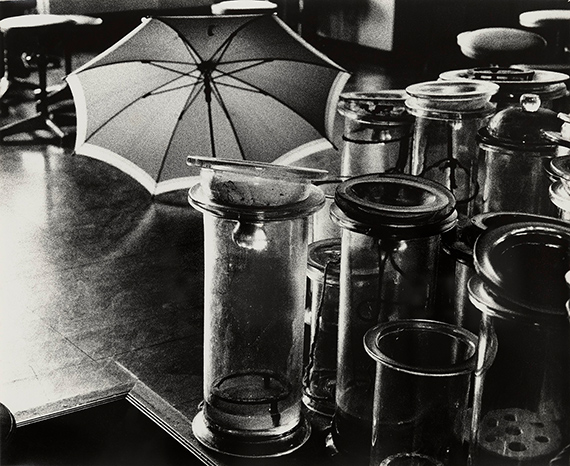
Suidobashi, 1981
Artist's signature and date in pencil verso
Vintage silver gelatin print
45 x 55 cm
© Ishiuchi Miyako, courtesy Michael Hoppen Gallery, London
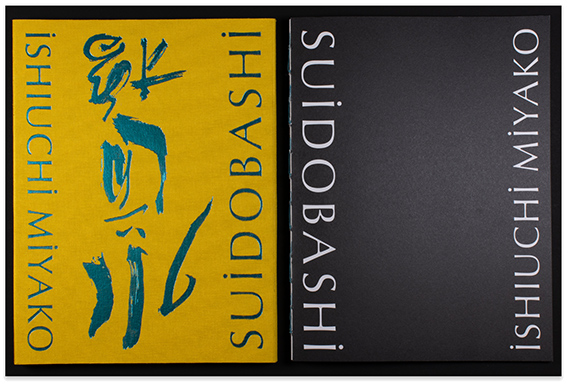
To accompany this exhibition, a dedicted bound book presented in a cloth-covered, foil-stamped slipcase. An edition of only 125 copies will be published by guiding light, with a foreword by Yasufumi Nakamori.
This will be released in september at the Independent.